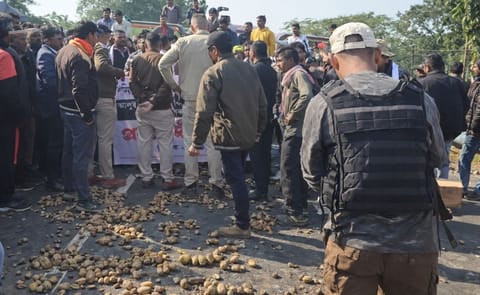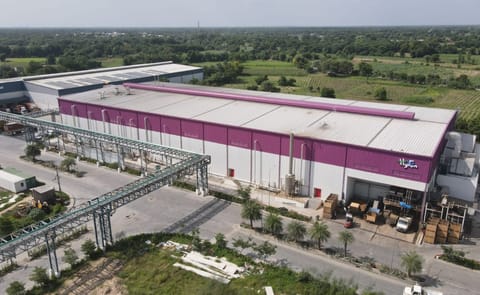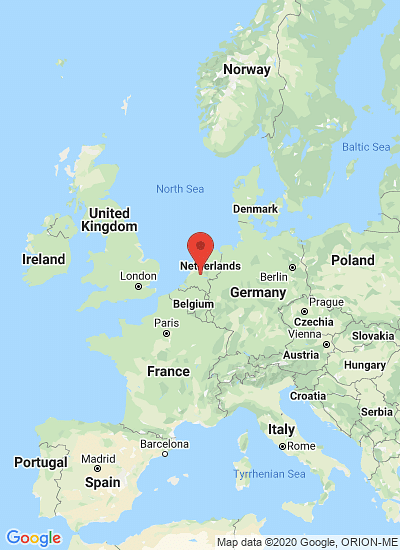Yield assessments in the Netherlands, September 2015, including yield in mid August, the additional growth from August - September and the 5 year average yield. (Courtesy: VTA)
Lower Yield and Quality will determine potato market in the Netherlands, says farmer association
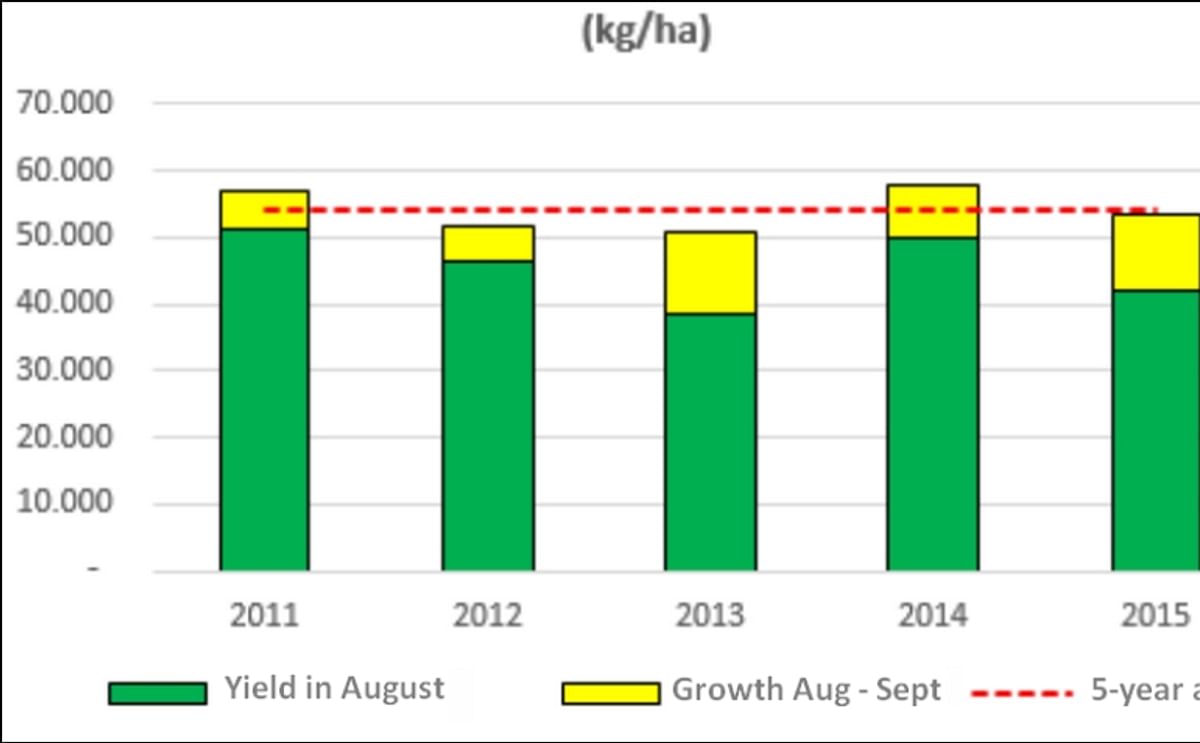
The Dutch Association of Arable Farmers of (VTA) has completed their annual assessment of the potato yield in the Netherlands for mid-September, following their standard measurement protocols in place since 2001.
The sampling includes a representative group of farmers from various regions in the Netherlands and covers a wide range of potato varieties intended for consumption (seed potatoes and potatoes for starch production are excluded).
The average yield measured was 53.622 kg per hectare. This is 8% lower than last year and on par with the 5-year average. Taking into account this year's reduced acreage and the fact that excessive rainfall destroyed a number of fields, this years overall production will be well below the total production of last year.
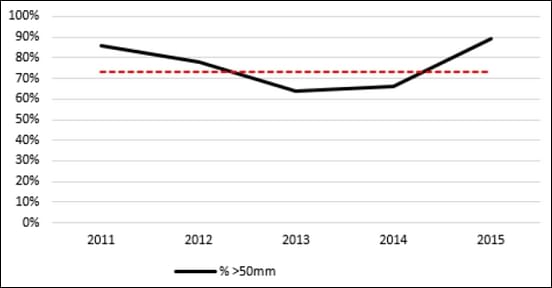
The percentage tubers > 50 mm, measured in September in the Netherlands. The dotted red line represents the 5-year average.
The quality of this year's potatoes is significantly below the quality of last season. Many lots contain "rotten" tubers. The shipments to the processing industry early due to water damage will see losses well above average. Additional yield loss in industry will occur as a result of the presence of secondary growth above normal. A low tuber dry matter content as indicated by the lower weight in water adds to the low expectations of the factory yield. The fact that tubers are larger this year will likely not compensate this, so the potato processing industry will need more potatoes for the same output of products.
Going forward, the quality will be an important factor for the development of supply and demand, with question marks especially concerning the risks related to "rot" and dry matter content (weight in water). The fact that farmers may postpone harvest in order to gain dry matter content introduces additional uncertainties. Finally, the presence of rot also affects the risks during storage.
As for the table potato market, higher losses should be expected due to the presence of scab and rot.




